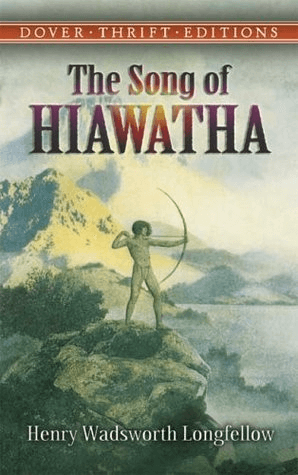Song of Hiawatha SummaryIntroductionIf you were to ask Longfellow where his narrative originates from, he would respond that the story comes from the forest, the rivers, and nature itself. This is how he begins the poem. In other words, he's implying that the mythology he's going to tell us has roots in nature just as much as it does in the words of any one person. Longfellow goes on to add that the singer Nawadaha, who found them in the brooks and woodlands, among other places, is the source of the tale he is going to narrate. A song about a man named Hiawatha is started by this guy. Additionally, we may infer from the poem's title that the musician will be singing about the main character in this tale. You may have noticed that this tale discusses Hiawatha's extreme suffering in order to "advance his people!". Like the life of Christ, doesn't it? You should be on the lookout for things like these since Longfellow is quite explicit in comparing the religion of Native Americans to his own Christian beliefs. About AuthorHenry Wadsworth Longfellow released The Song of Hiawatha, his most well-known poem, in 1855. It was an instant hit, catapulting Longfellow to literary fame and having a long-lasting impact on popular culture. Longfellow intended for this monumental work to honor Native American ancestry while also feeding preconceptions and the fallacious notion that Indigenous culture was disappearing in America. Hiawatha's influence on American society has persisted since then, prompting discussion about its advantages and disadvantages. To communicate numerous Native American tales to a broad audience, Longfellow employed rhythmic poetry. The epic poem primarily emphasizes the tales of the Ojibwe people who lived in the Lake Superior region. 
Summary of the PoemThe poem begins by describing how Gitche Manito, the Master of Life, descended from the clouds and commanded everyone on Earth to cease warring and get along. To clinch the bargain, he had these folks create peace pipes, which they pull out and smoke together whenever a quarrel develops. Then Gitche Manito adds a bonus by informing the populace that he would soon send a prophet who will endure hardship on their behalf in order for everyone to have happier lives. A kid named Hiawatha is born to a lady named Wenonah some time after Gitche Manito makes his appearance. Although Hiawatha's father is a deity who governs the west wind, he is a terrible parent. He abandons Hiawatha's mother, who eventually passes away from heartache. Meanwhile, Hiawatha develops into a strong, knowledgeable young man with a sterling reputation that spreads throughout the entire country. The text continues to tell us about all the wonderful things Hiawatha achieves, like improving maize yields and slaying the enormous fish deity Mishe-Nahma. Eventually, Hiawatha is lonely and makes the decision to propose to Minnehaha. They live together peacefully when she accepts. Hiawatha makes time along the route to create reading and writing and pass these skills on to his people. Hiawatha loses his two closest companions in the second half of the poem. Then he must find Pau-Puk-Keewis, a troublemaker who has been wrecking everything in his way. Finally, Minnehaha, Hiawatha's wife, passes away from a fever during a severe winter. Hiawatha believes that nothing in his life is left to keep him in his community. He dreams one night that white people would come to his people on a huge boat and teach them a new religion. Hiawatha believes that his people will be secure with the whites (although he may be wrong on that one), and sure enough, his vision comes true. Hiawatha boards his boat and paddles away from his village at the conclusion of the poem. He has no idea when or if he'll ever return. So that's all. ConclusionThe poem recounts his life, from his early adventures to meeting Minnehaha and falling in love quickly to marrying her and losing her to disease. In the end, he departs once white settlers show up, believing that his people will survive without him. Frequently Asked Questions
|
 For Videos Join Our Youtube Channel: Join Now
For Videos Join Our Youtube Channel: Join Now
Feedback
- Send your Feedback to [email protected]
Help Others, Please Share









